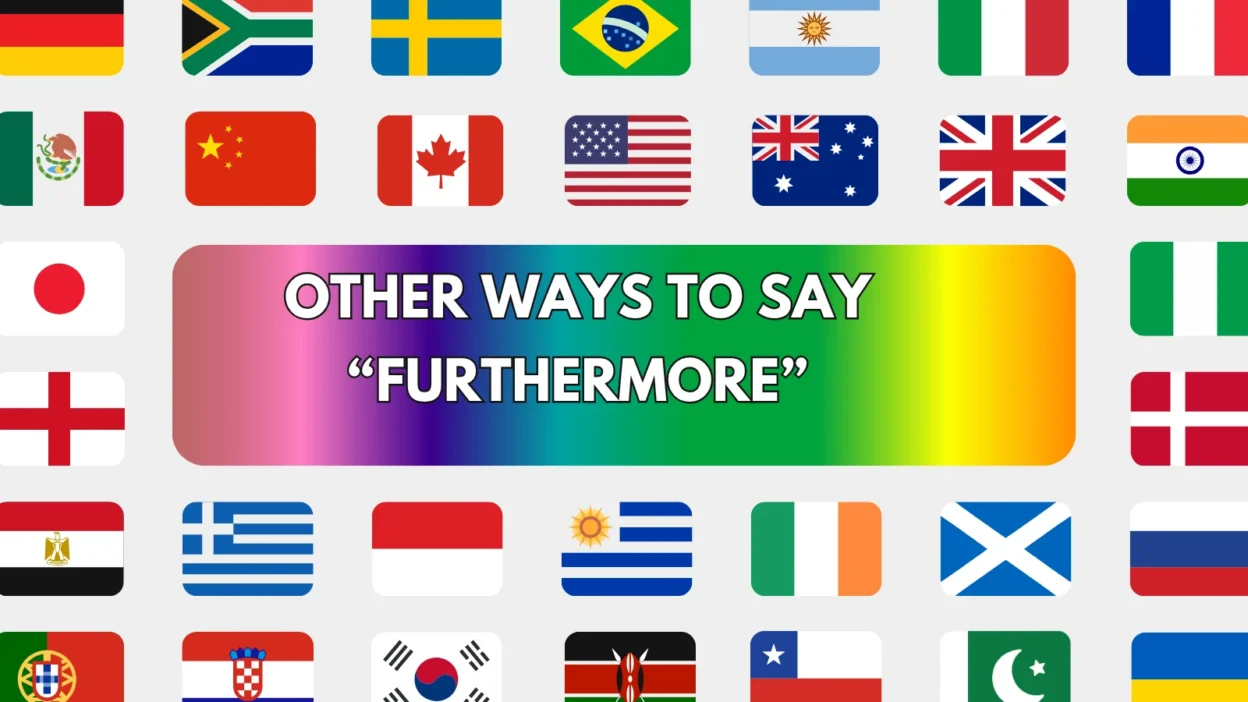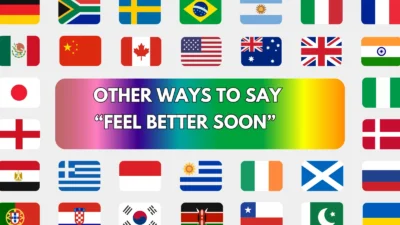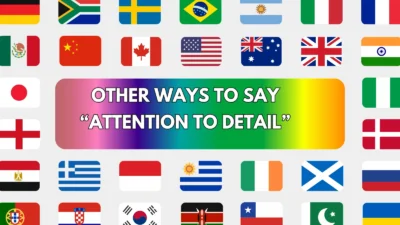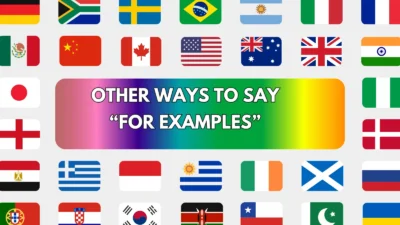The word “furthermore” is often used in formal writing to add an extra point or strengthen an argument. It’s a great transition word that keeps the flow going — but using it too often can make your writing sound stiff or repetitive.
This article shares 25 engaging and professional alternatives to “furthermore” to add richness and variation to your writing or speech. Whether you’re preparing a report, essay, or business email, these options will help you sound polished and purposeful.
1. Moreover
Meaning:
Adds a new supporting idea to strengthen a previous point.
Detailed Explanation:
“Moreover” is a very close synonym to “furthermore,” often used in formal or persuasive writing to emphasize reinforcement.
Scenario Example:
The plan is cost-effective. Moreover, it reduces environmental impact.
Best Use:
Essays, research, business writing.
Tone:
Formal, persuasive.
2. In addition
Meaning:
Introduces something extra or supplementary.
Detailed Explanation:
This phrase offers a smooth, professional way to add new information that supports the original idea.
Scenario Example:
In addition to meeting targets, the team exceeded expectations.
Best Use:
Emails, reports, academic writing.
Tone:
Professional, balanced.
3. Also
Meaning:
Adds another point or item.
Detailed Explanation:
“Also” is versatile and can be used at the beginning or within a sentence. It’s less formal than “furthermore,” but very effective.
Scenario Example:
She manages the budget. Also, she leads the design team.
Best Use:
Everyday writing, casual business emails.
Tone:
Neutral, conversational.
4. As well
Meaning:
Adds an additional item or idea at the end of a sentence.
Detailed Explanation:
“As well” is typically used in a softer or more casual tone, often replacing “too.”
Scenario Example:
He’ll be presenting the project. Jane will assist as well.
Best Use:
Emails, friendly writing.
Tone:
Polite, informal.
5. What’s more
Meaning:
Adds something extra, often with emphasis or surprise.
Detailed Explanation:
Used to introduce a point that intensifies or strengthens a previous one.
Scenario Example:
The software is affordable. What’s more, it’s extremely user-friendly.
Best Use:
Presentations, persuasive writing.
Tone:
Excited, persuasive.
6. Besides that
Meaning:
Introduces another supporting idea.
Detailed Explanation:
This phrase is more casual but still effective in written communication when adding helpful or relevant information.
Scenario Example:
The food was excellent. Besides that, the service was top-notch.
Best Use:
Blogs, informal emails.
Tone:
Conversational, light.
7. Not only that
Meaning:
Adds an additional point to make a statement more impactful.
Detailed Explanation:
Often used when building toward a bigger or more persuasive point.
Scenario Example:
The client loved the proposal. Not only that, they want us to lead the next campaign.
Best Use:
Persuasive speech, presentations.
Tone:
Bold, engaging.
8. Additionally
Meaning:
Introduces another relevant detail or point.
Detailed Explanation:
A solid and professional alternative, very suitable for academic or business writing.
Scenario Example:
The system is reliable. Additionally, it supports multiple users.
Best Use:
Reports, proposals, academic writing.
Tone:
Professional, clear.
9. To add to that
Meaning:
Introduces more information that reinforces the previous idea.
Detailed Explanation:
Slightly informal but engaging, this phrase smoothly continues a discussion.
Scenario Example:
The budget was reduced. To add to that, two departments were merged.
Best Use:
Presentations, informal meetings.
Tone:
Friendly, conversational.
10. And what’s more
Meaning:
Adds surprising or impressive information.
Detailed Explanation:
This phrase emphasizes importance and builds momentum.
Scenario Example:
The campaign reached 2 million people. And what’s more, it boosted sales by 40%.
Best Use:
Marketing, storytelling.
Tone:
Enthusiastic, informal.
11. On top of that
Meaning:
Adds an extra benefit or detail.
Detailed Explanation:
Used to highlight a bonus or additional positive/negative aspect.
Scenario Example:
They delivered ahead of schedule. On top of that, they reduced costs by 15%.
Best Use:
Speech, storytelling, casual writing.
Tone:
Conversational, expressive.
12. Over and above that
Meaning:
Adds another significant point to what’s already been said.
Detailed Explanation:
This expression adds emphasis, often used to stack achievements or benefits.
Scenario Example:
She handled the crisis well. Over and above that, she found a long-term solution.
Best Use:
Recognition, leadership messages.
Tone:
Formal, appreciative.
13. What else
Meaning:
Introduces further items or points in a list-like structure.
Detailed Explanation:
Used rhetorically to suggest there’s even more information to consider.
Scenario Example:
We’ve increased profits, cut waste — what else could you want?
Best Use:
Speech, rhetorical statements.
Tone:
Casual, lively.
14. Then again
Meaning:
Adds another idea or reflection, often with a shift in thought.
Detailed Explanation:
Used more often in speech and reflective writing than formal documents.
Scenario Example:
We could go with Plan A. Then again, Plan B is more efficient.
Best Use:
Storytelling, internal dialogue.
Tone:
Reflective, casual.
15. In like manner
Meaning:
Adds a similar or corresponding point.
Detailed Explanation:
Shows that what follows is in the same pattern or style as what came before.
Scenario Example:
They adopted flexible hours. In like manner, their competitors did the same.
Best Use:
Academic and analytical writing.
Tone:
Formal, structured.
16. By the same token
Meaning:
Adds a parallel argument or similar reason.
Detailed Explanation:
This phrase shows agreement or consistency between ideas.
Scenario Example:
She values integrity. By the same token, she expects honesty from others.
Best Use:
Debates, analytical writing.
Tone:
Formal, thoughtful.
17. In the same vein
Meaning:
Introduces a related idea in the same category or tone.
Detailed Explanation:
Often used in discussions to maintain a consistent argument or mood.
Scenario Example:
The presentation was engaging. In the same vein, the handouts were visually strong.
Best Use:
Analysis, commentary.
Tone:
Professional, aligned.
18. Likewise
Meaning:
Adds agreement or similarity.
Detailed Explanation:
Short and formal, “likewise” shows the next idea follows logically or similarly.
Scenario Example:
He offered help. Likewise, others volunteered their support.
Best Use:
Academic, technical, polite writing.
Tone:
Formal, cohesive.
19. What is more
Meaning:
Emphasizes a follow-up point, often surprising or persuasive.
Detailed Explanation:
This is a stronger and more literary way of adding emphasis to an additional idea.
Scenario Example:
The strategy saved money. What is more, it improved morale.
Best Use:
Persuasive essays, storytelling.
Tone:
Confident, expressive.
20. Too
Meaning:
Adds an additional idea, typically at the end of a sentence.
Detailed Explanation:
Simple and widely used, “too” is ideal for casual or spoken language.
Scenario Example:
He submitted the report early. She did, too.
Best Use:
Everyday language, dialogue.
Tone:
Light, casual.
21. Not to mention
Meaning:
Introduces something important that hasn’t been addressed yet.
Detailed Explanation:
Adds something impressive or impactful without needing emphasis.
Scenario Example:
The trip was fun — not to mention, very affordable.
Best Use:
Conversations, casual writing.
Tone:
Natural, expressive.
22. Plus
Meaning:
Adds another item in a quick and simple way.
Detailed Explanation:
“Plus” is very informal and commonly used in lists or casual conversation.
Scenario Example:
We need coffee, snacks, plus some extra napkins.
Best Use:
Emails, lists, speech.
Tone:
Informal, fast-paced.
23. Then
Meaning:
Adds a point that follows naturally in sequence.
Detailed Explanation:
More commonly used for sequence, but it can also serve as an additive transition.
Scenario Example:
We covered the basics. Then we explored advanced techniques.
Best Use:
Process writing, instructions.
Tone:
Neutral, chronological.
24. In like fashion
Meaning:
Adds a point that continues a pattern or style.
Detailed Explanation:
A more elegant version of “similarly” or “likewise.”
Scenario Example:
The product launch was flawless. In like fashion, the follow-up campaign succeeded.
Best Use:
Creative writing, formal essays.
Tone:
Elegant, classic.
25. Too boot (archaic/rare)
Meaning:
Adds something extra — usually used for poetic or dramatic effect.
Detailed Explanation:
A very rare, old-fashioned phrase for emphasis, similar to “on top of that.”
Scenario Example:
He fixed the issue, and did it with a smile, to boot.
Best Use:
Poetry, storytelling.
Tone:
Charming, dramatic.
Conclusion
The word “furthermore” is a valuable transition, but using it repeatedly can limit your expression. These 25 diverse and well-matched alternatives help you enrich your communication, vary sentence flow, and adapt your tone to any situation — from academic writing to casual conversation.




